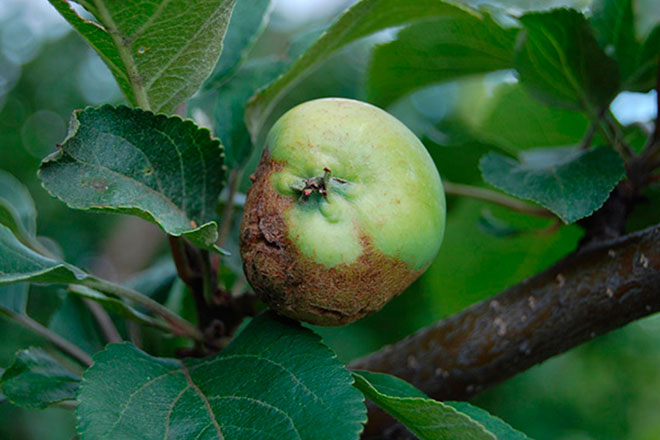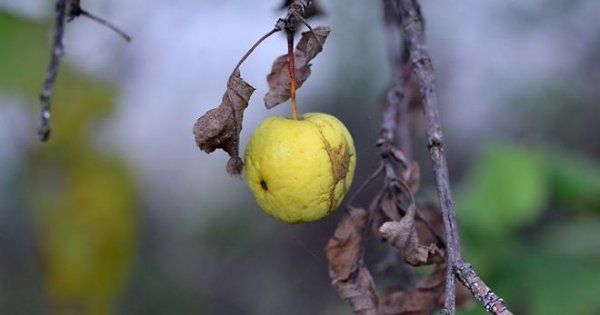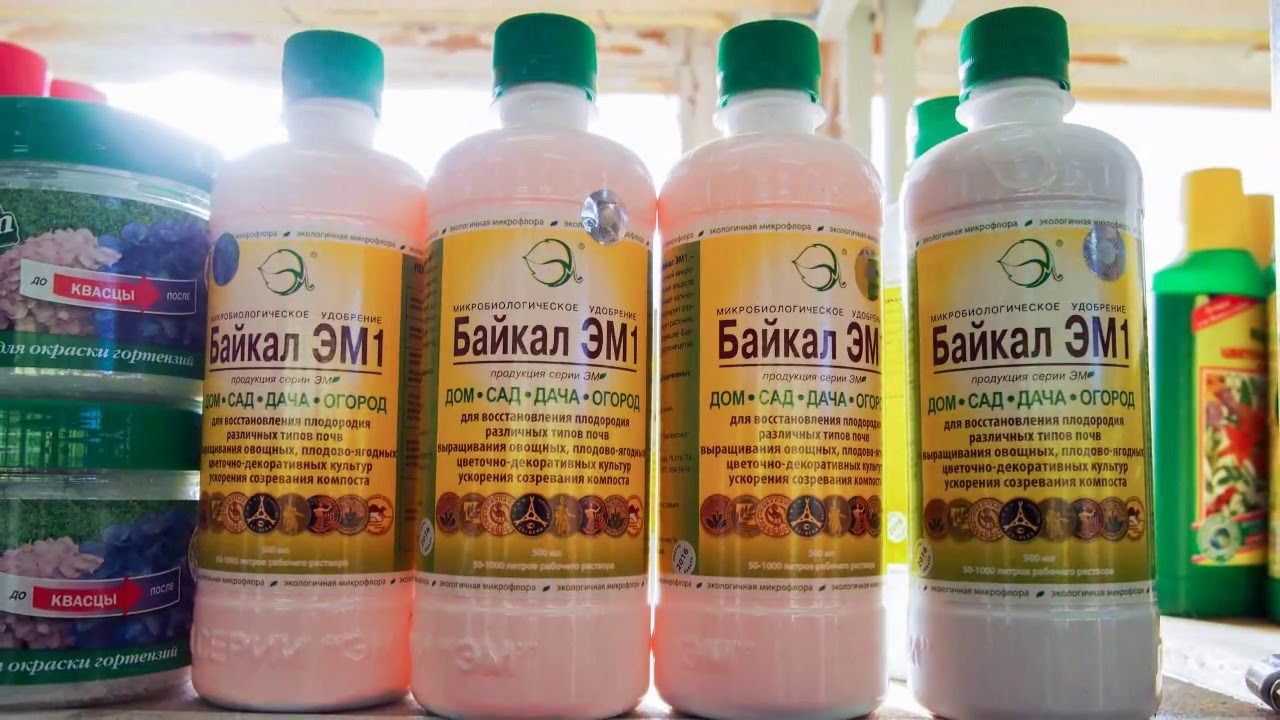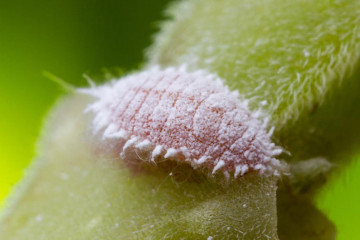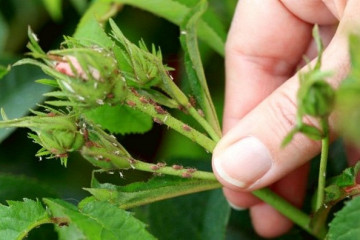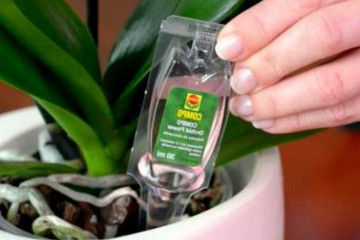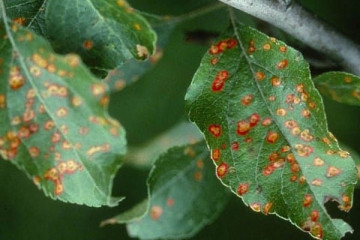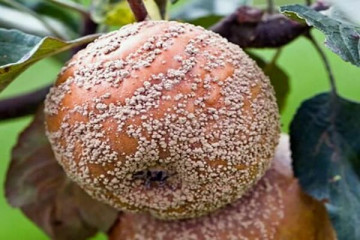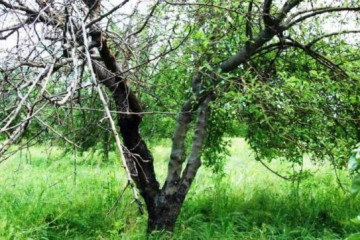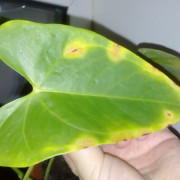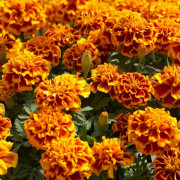Bacterial apple burn - folk and biological remedies for treatment
Content:
- Etiology and symptoms
- How does bacterial burn infection occur?
- Distribution mechanism
- Chemicals for the treatment of bacteriosis
- Folk remedies for the treatment of bacteriosis
- Biological agents for the treatment of bacteriosis
- Prevention of bacterial burn
- Mistakes made by gardeners in the fight against fire blight
- What is often confused with fire blight
A bacterial burn on an apple tree can destroy the entire garden area and deprive the owner of the crop. If you ignore the problem, after 2-3 seasons it will be impossible to harvest on the apple tree, since the fruits will be charred.
Etiology and symptoms
The bacteria are the causative agents of the disease that spreads between trees in the garden, moving from infected plants to healthy young seedlings. High humidity and moderate temperatures contribute to this.
Foliage
The leaves of the apple tree are like burnt, gradually curl, darken and dry out. Affected foliage remains in this form on the tree, does not fall off.
Escapes
Black or dark brown spots appear on the branches and trunk, which are easy to see visually. Watery ulcers may form at the ends of the branches. Over time, the apple tree completely acquires a brown tint. Exudate appears on diseased shoots, necrotic weeping ulcers form on the bark.
Inflorescences and fruits
Dark spots also appear on flowers and fruits when infected with a fire blight. Inflorescences completely darken over time and fall off. Fruits often do not have time to set. But if they have already appeared, then in a shrunken state they hang on a tree all season.
How does bacterial burn infection occur?
The development of the primary infection often begins in the spring, when the trees are blooming. Bacteria enter flowers with pollen and exudate particles, this can be seen through a microscope.
Atmospheric humidity of about 70% and a temperature regime of more than +18 degrees contribute to the rapid spread of infection by moving bacteria through the tissue into branches. A year later, a viscous exudate is released from the necrotic ulcers, stretching into thin threads and carried by the wind. The infection cycle is resumed.
The disease can spread with planting and grafting materials, containers, affected fruits. Also carriers are:
- insects;
- birds;
- rain;
- air flow.
Distribution mechanism
The spread of the disease occurs according to the following mechanism:
- The infection hibernates in the vessels of the diseased plant.
- In early spring, during sap flow, bacteria spread throughout the culture and are excreted in the form of exudate until autumn.
- During the flowering period, the development of bacteria continues. Pollination insects, as well as birds and pests, carry the disease in the garden.
- Similarly, bacteria get inside the rest of the fruit crops.
Contributing factors and allies of bacteria
Typical bacteriosis of the apple tree often infects the garden with allies. It is often possible to find at least two bacteria on crops, one of which is rather weak, the other pathogenic.
Symptoms may appear along with a bacterial burn:
- scab;
- fruit rot;
- Erwinia bacteria.
Chemicals for the treatment of bacteriosis
At the first signs of a bacterial burn, it is worth starting to treat the garden with such fungicidal preparations as:
- "Speed".
- Horus.
- Fitosporin.
- Fitolavin.
For spraying, it is worth using antibiotics:
- tetracycline;
- streptomycin;
- ofloxacin;
- ampicillin.
Folk remedies for the treatment of bacteriosis
Treating a bacterial burn with just one folk remedy may not be effective. This method can be used as an adjunctive therapy that helps fight the infection.
Acid
With the help of boric and succinic acid, an acidic environment can be created that will increase the overall resistance of horticultural crops. To prepare a spray solution, you must dilute in 10 liters of water:
- 10 g boric acid;
- 10 tablets of succinic acid.
Ash
A solution based on wood ash is used. To prepare it, you need to dilute 200 g of ash in 10 liters of water.
Baker's yeast
Nutritional yeast contains microorganisms that suppress bacteria and enhance the growth of cultures. To prepare the product you need:
- Heat 10 liters of water.
- Dissolve 10 g of yeast and 20 g of sugar in a warm liquid.
- Soak the mixture for 2 hours.
- Spray damaged areas.
Sapropel
The substance has the ability to clean the soil from pathogenic bacteria. Thanks to him, the garden culture is filled with potassium and phosphorus. It should be applied in the form of mulch with a layer of 5-7 cm.
Biological agents for the treatment of bacteriosis
Many gardeners are interested in how to treat an apple tree bacterial burn. To strengthen and heal the seedlings, you should additionally use the biological spectrum of actions.
"Stimix"
"Stimix" is a biological drug that enhances the metabolic process, neutralizes the harmfulness of toxic substances and acts as an immunomodulator. To fight disease, it can be used in the form of:
- Concentrate by diluting 100 ml in 10 liters of water. It is intended for watering plants after the harvest has already been harvested.
- Standard by diluting 50 ml in 10 liters of water. This consistency should be used to spray apple foliage about 7 times during the growing season with an interval of 2 weeks.
- Fitostim with a diluted consistency of 50 ml per 10 liters of water. It is needed for watering every 30 days.
"Baikal-EM1"
Biological preparations of the Baikal-EM1 brand are immunostimulants and antidotes. Used to treat horticultural crops through spraying. To prepare a solution, you should mix 10 ml of the substance with 10 liters of water. The procedure should be carried out in the garden at least 3 times throughout the growing season.
"Shining-1"
"Shining-1" - means for restoration of soil microflora. Designed for spring watering. To prepare the solution, you need to dilute 1 package of the product in 500 ml of water, then combine 10 ml of the dissolved active substance with 10 liters of water.
Prevention of bacterial burn
For the purpose of prevention, the gardener should take the following measures:
- when the season of warm rains comes, it is recommended to spray the garden with special preparations that kill bacteria;
- during the first 2 years of the seedling's life, flower buds should be cut off;
- regularly handle inventory;
- thinning tree crowns;
- choose varieties resistant to bacteriosis;
- actively use fertilizing complexes;
- use healthy seedlings for planting;
- timely remove the affected parts of the culture.
Mistakes made by gardeners in the fight against fire blight
Gardeners often make the following mistakes:
- the use of fungicidal preparations helps to destroy the infection of the fungus, and not bacteria;
- due to inexperience, they can misdiagnose the plant;
- Improper care can leave infected parts of the plant on the treetops, which allows bacteria to enter the tissues of the garden crops through the stalk and burn them.
What is often confused with fire blight
A bacterial burn is described very similar to the symptoms of tree drying out due to improper watering. Indeed, in both cases, the leaves of the apple tree look like burnt. Inexperienced gardeners often confuse these diseases.
Due to a bacterial burn, an apple or pear tree can die in 1-2 seasons. To avoid the problem, you need to carry out regular maintenance of the garden, carefully look after the crops and, at the first signs of illness, use antibiotics in combination with biological and folk remedies.
